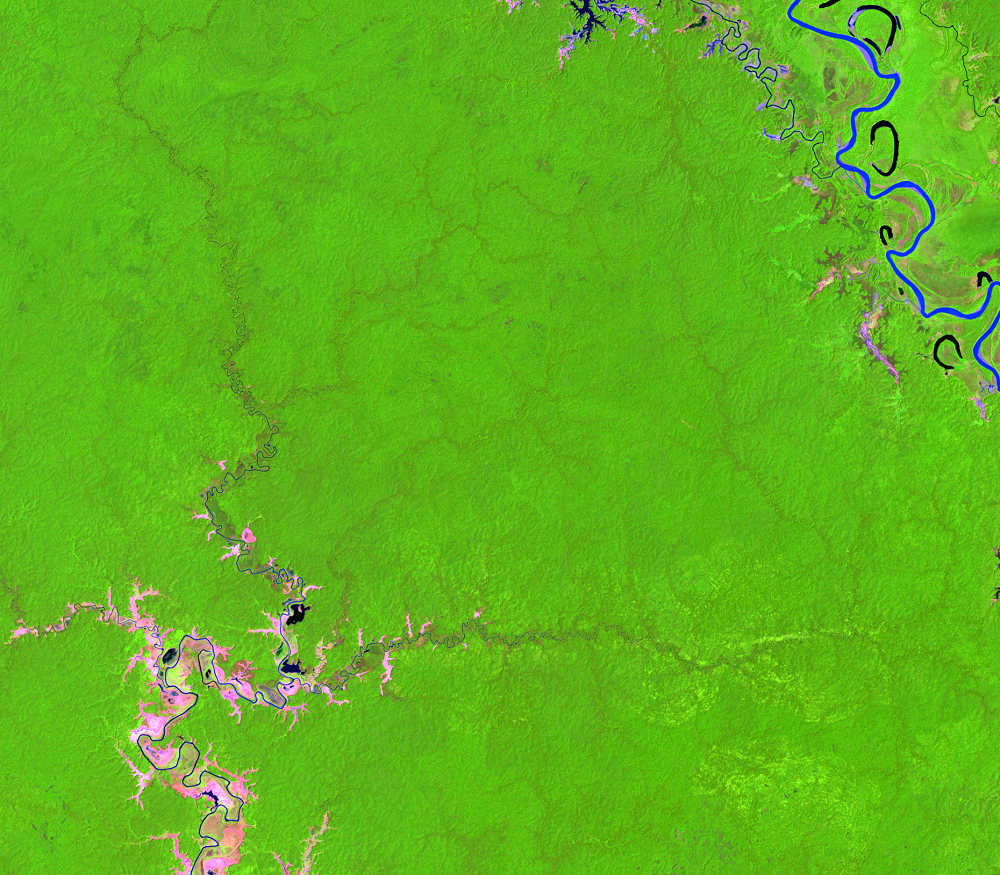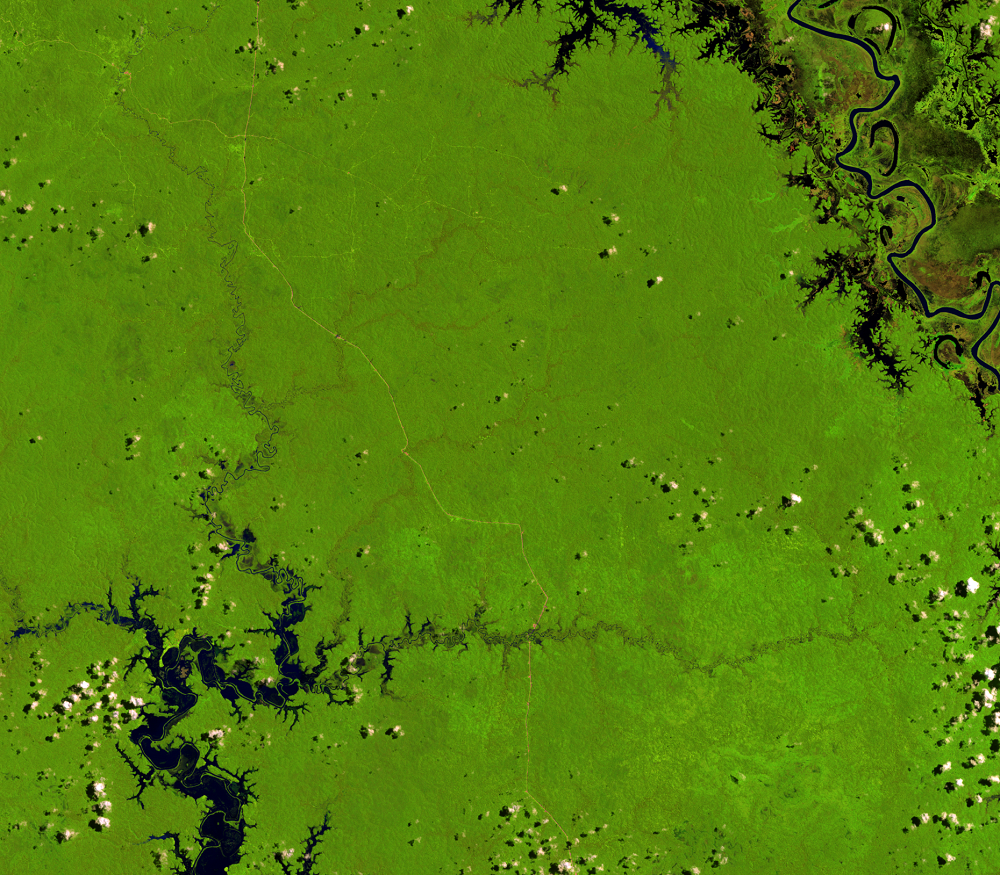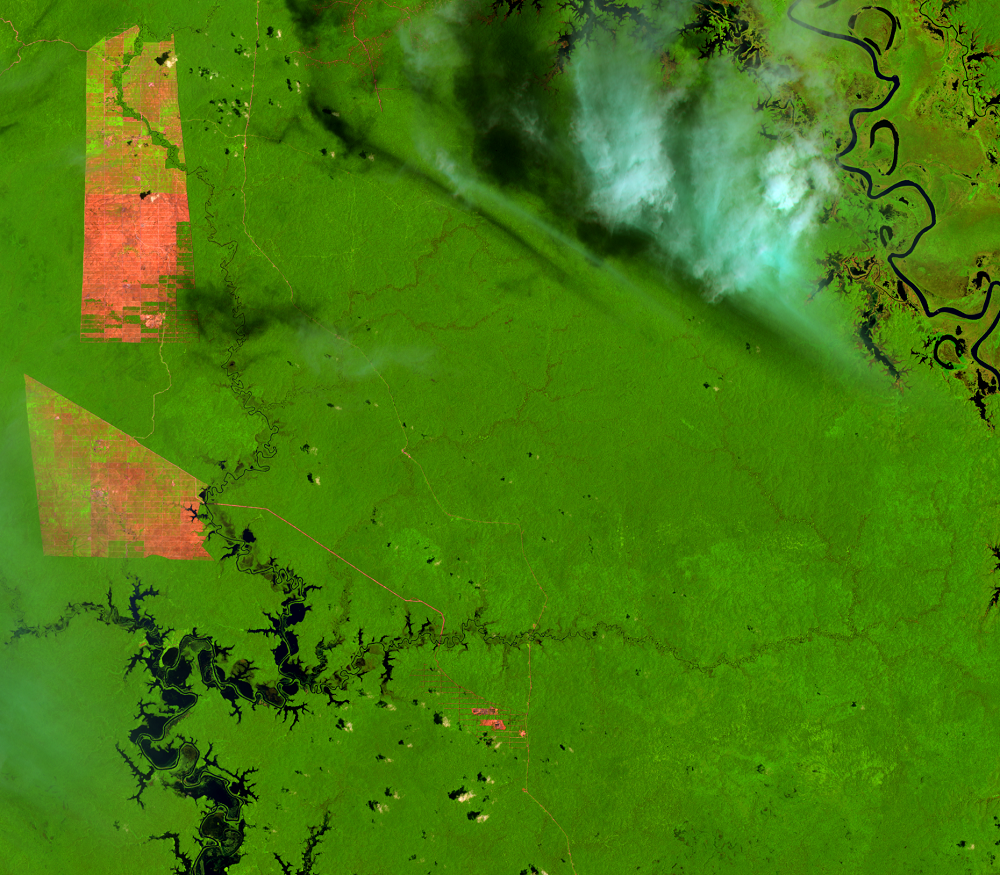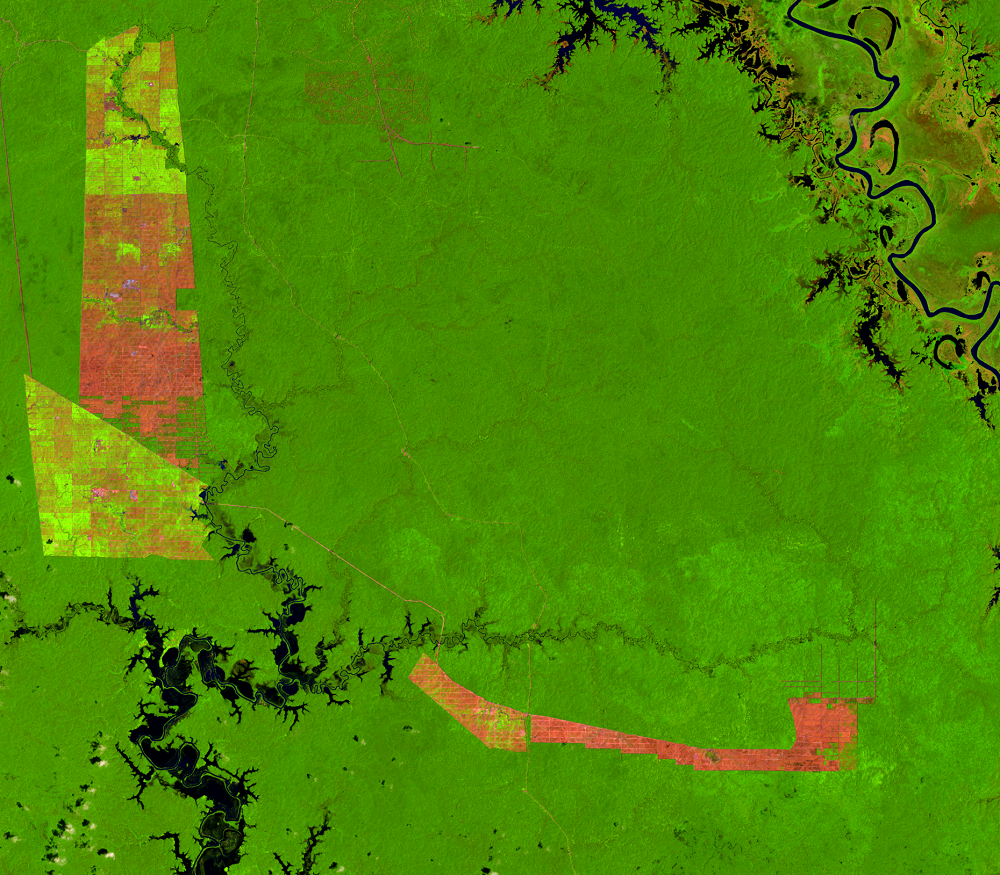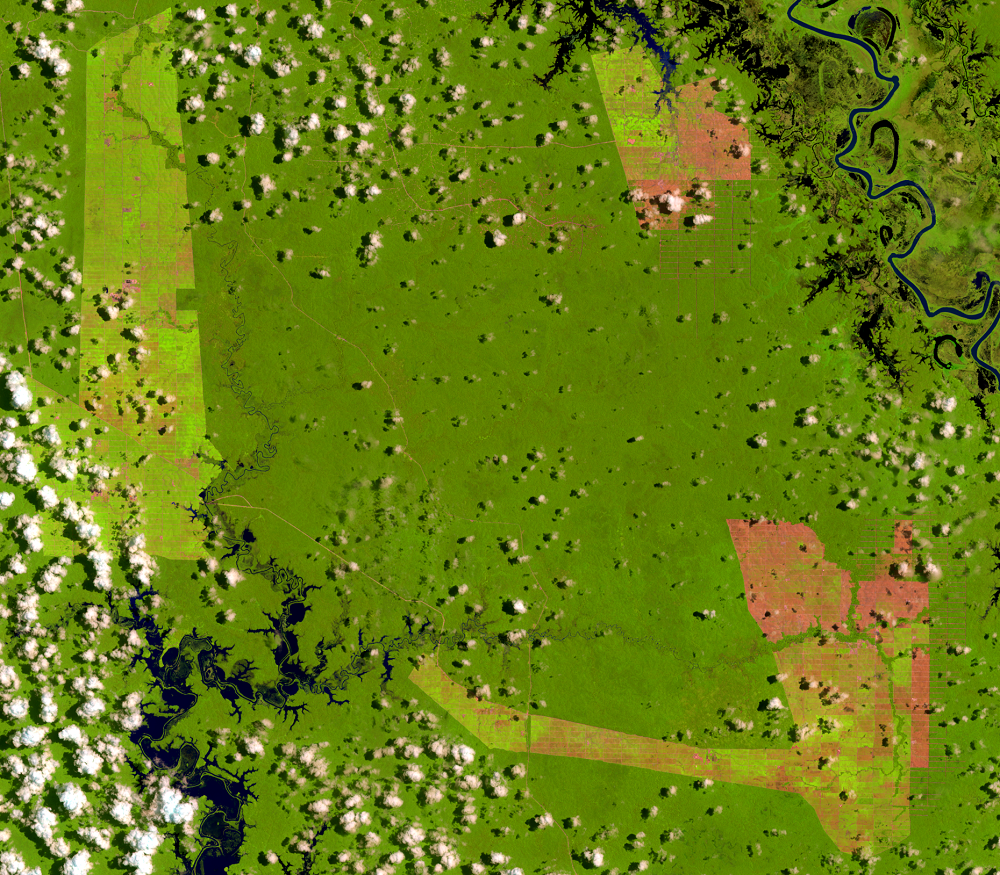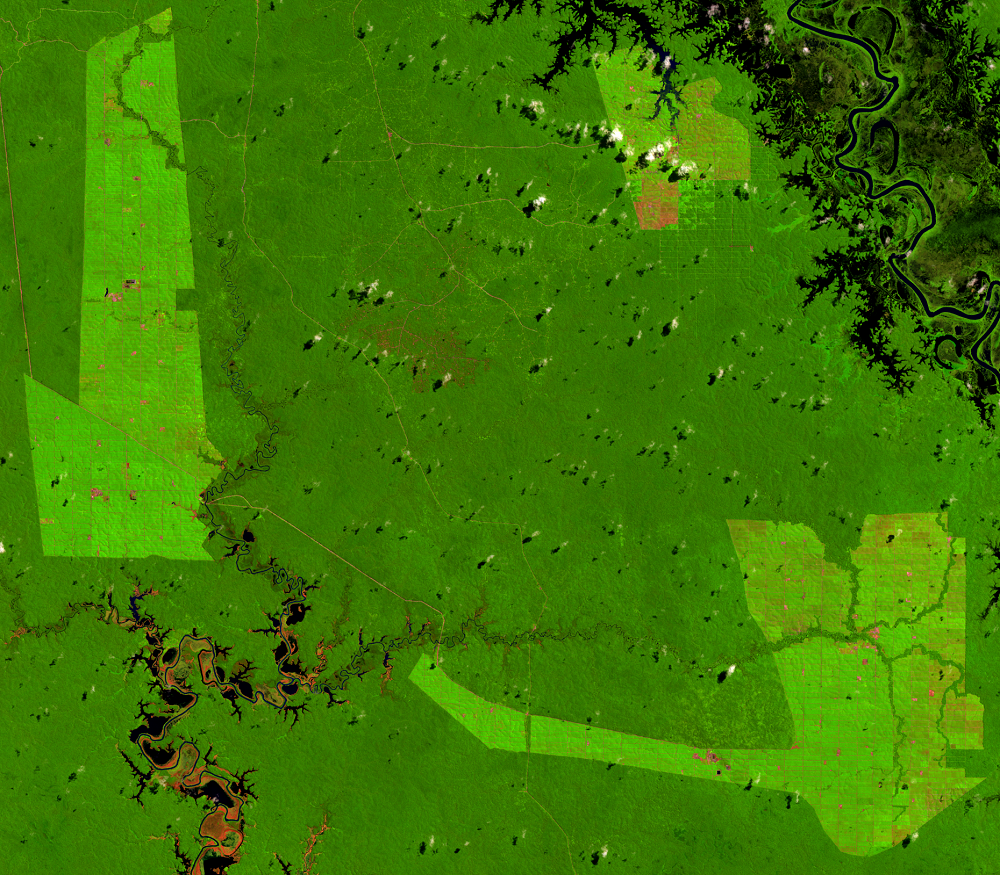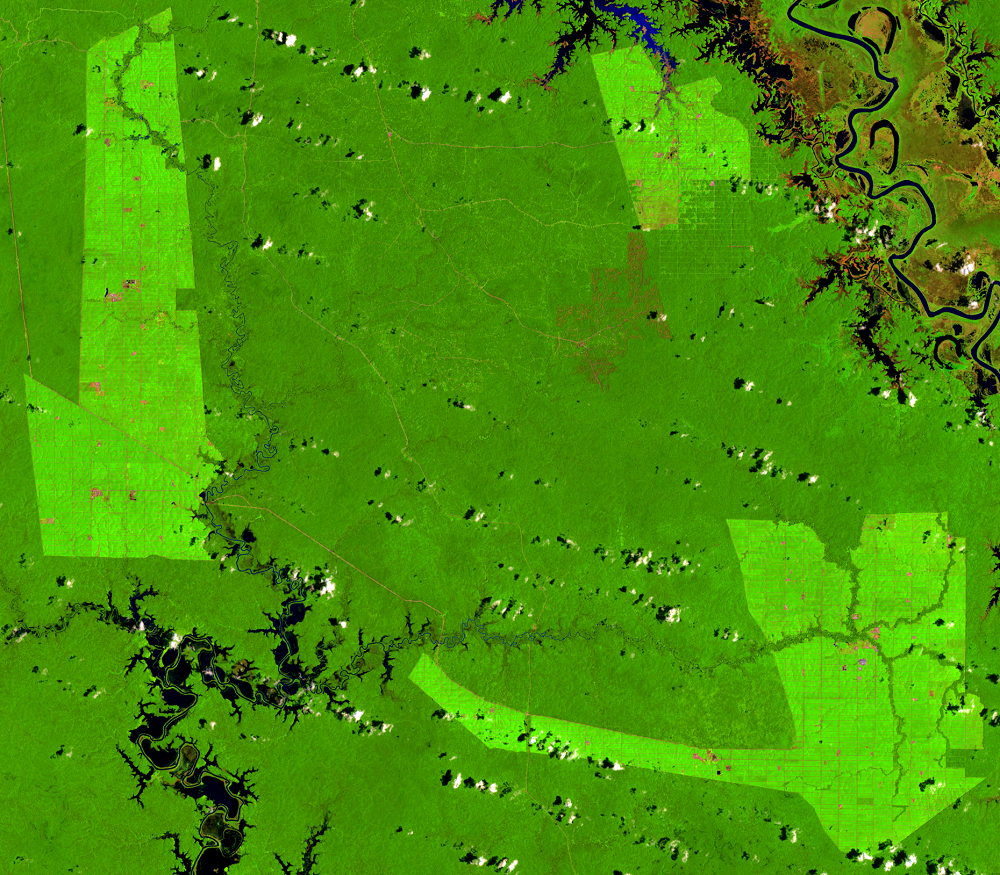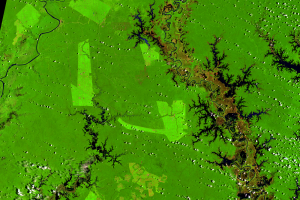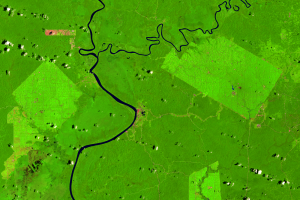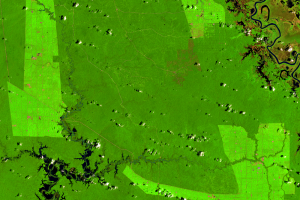
Palm Oil Plantations
Earth Resources Observation and Science (EROS) Center - Earthshots
Understandably, many countries are pursuing renewable resources to get away from the reliance on fossil fuels. However, new research has determined that palm oil doesn’t reduce greenhouse gas emissions at all—producing biofuel from palm oil may actually increase greenhouse gases as much as burning fossil fuels does.
One of the reasons is peat land. Much of the rain forest that is being converted to palm oil plantations is located on peat land. These natural carbon sinks sequester huge amounts of carbon. Cutting these forests and draining the peat land releases this stored carbon that has been there for thousands of years. Besides that, the carbon costs in fertilizing and managing the crops, processing the products, and transporting them outweigh any benefits.
Forest cover in West Papua was estimated to be 33 million hectares in 1997. That reduced to 30.4 million hectares by 2004. Even more plantations appear in the later images.

